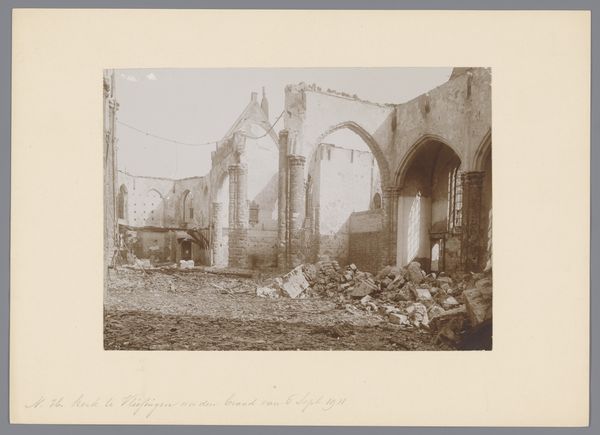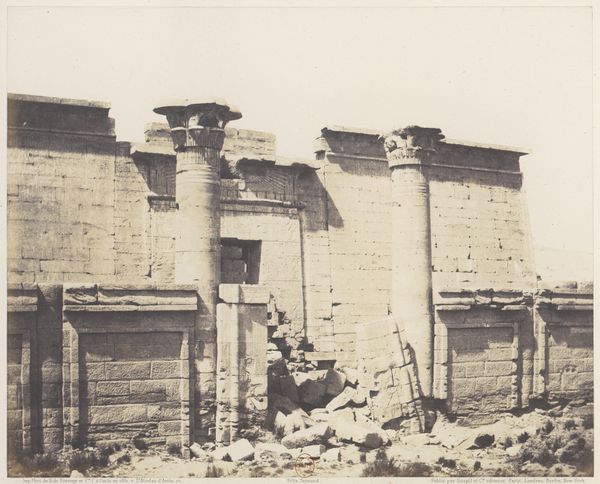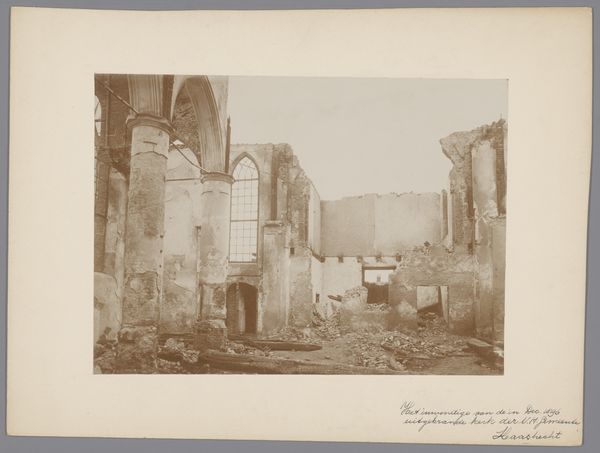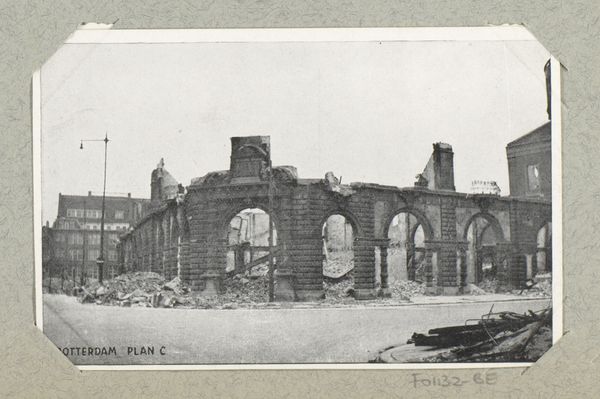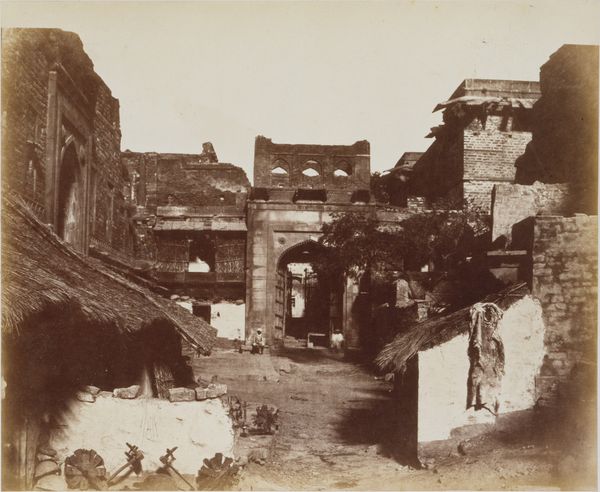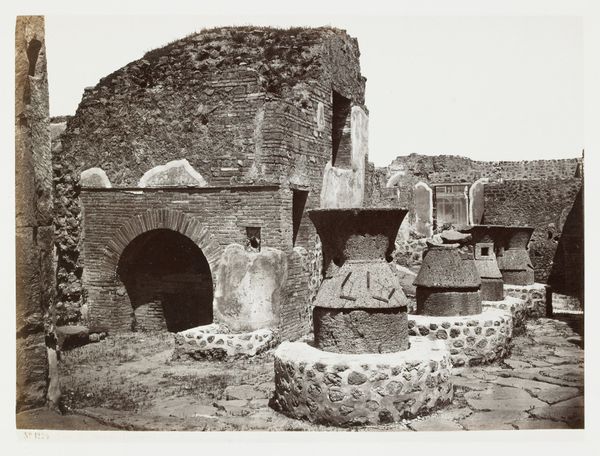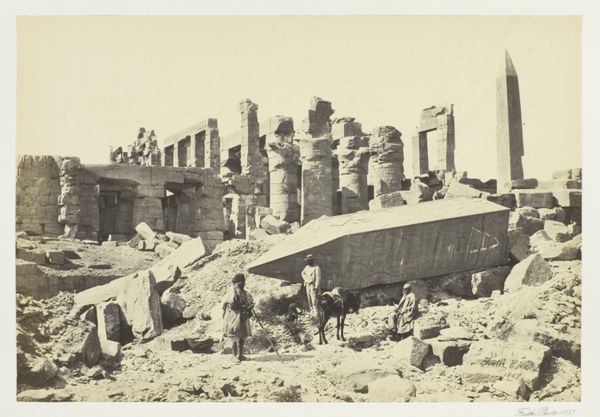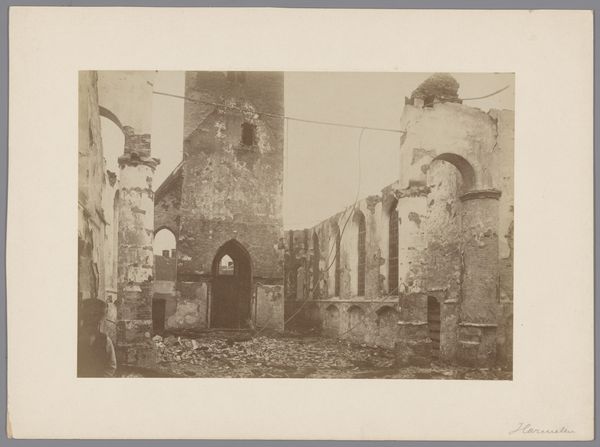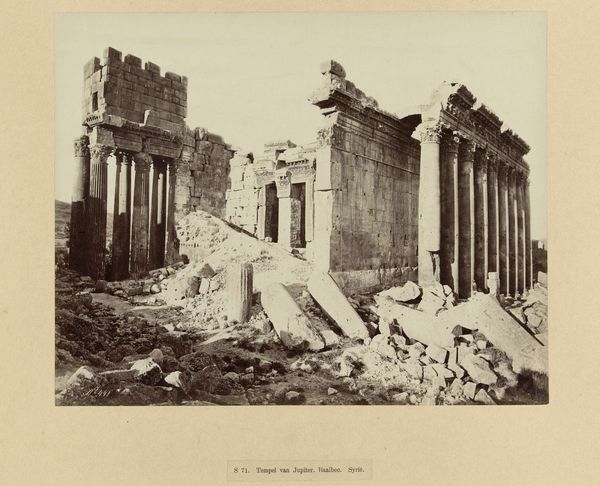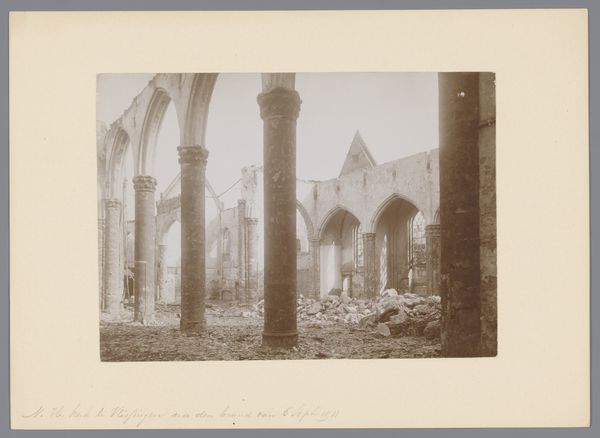
Dimensions: height 224 mm, width 946 mm, height 252 mm, width 988 mm
Copyright: Rijks Museum: Open Domain
Editor: We’re looking at a panoramic gelatin-silver print called “Damage After the First World War,” taken around 1918 or 1919 by the Panoramic Photo Co. The sheer devastation it captures is striking. What catches your eye? Curator: The most compelling aspect, for me, is the stark contrast between the geometric forms of the buildings and the chaotic textures of the damage. Note how the photographer has arranged the composition; a street implied by receding parallel lines which draws the eye to the leveled structures in the distance. Consider the use of monochrome: it eliminates color as a distraction, emphasizing the shapes and shadows, and heightens the sense of ruin. Editor: I hadn't noticed the emphasis on shape as much as the details of the rubble. What effect do you think that contrast of geometric versus chaotic has? Curator: Precisely. The ruins, while objectively chaotic, still adhere to a grid-like framework that imposes order in spite of itself, perhaps hinting at society's innate organizing tendencies, a phoenix from the ashes idea if you will. And that horizon line? Note how consistently the image meets a sort of vanishing point, as though nothing exceeds the level plane of war's ruin. This flattening denies us, the viewer, access into its past. Editor: So, you're suggesting that this destruction, captured in this photograph, still holds on to a sense of structure even in its broken form. It sounds as if order is something impossible to destroy completely. Curator: Indeed. The photograph itself becomes a document of not just loss, but also the persistent structuralism inherent in our world, or, the attempt to reconstruct from it. Do you think, by analyzing the form and arrangement, we might glimpse deeper understandings of post-war sentiments, even without knowing the exact location depicted? Editor: That's fascinating. I initially saw chaos and ruin, but now I see a testament to enduring structure, a poignant commentary rendered through light, shadow, and form. Curator: Precisely. It's through that concentrated lens that a formalist reading uncovers greater value and understanding in such a sobering, material record of the past.
Comments
rijksmuseum about 2 years ago
⋮
After the end of the First World War, the Panoramic Photo Company, established in France, took photographs in various heavily shelled Belgian and northern French cities. The broad panoramic format brought the ravages to life more vividly than any other kind of ‘normal’ photograph could have. In addition to cities such as Ypres, Lille, and Arras, the firm also photographed the former battlefield. Intense fighting took place around Mont Kemmel in the final year of the war.
Join the conversation
Join millions of artists and users on Artera today and experience the ultimate creative platform.
